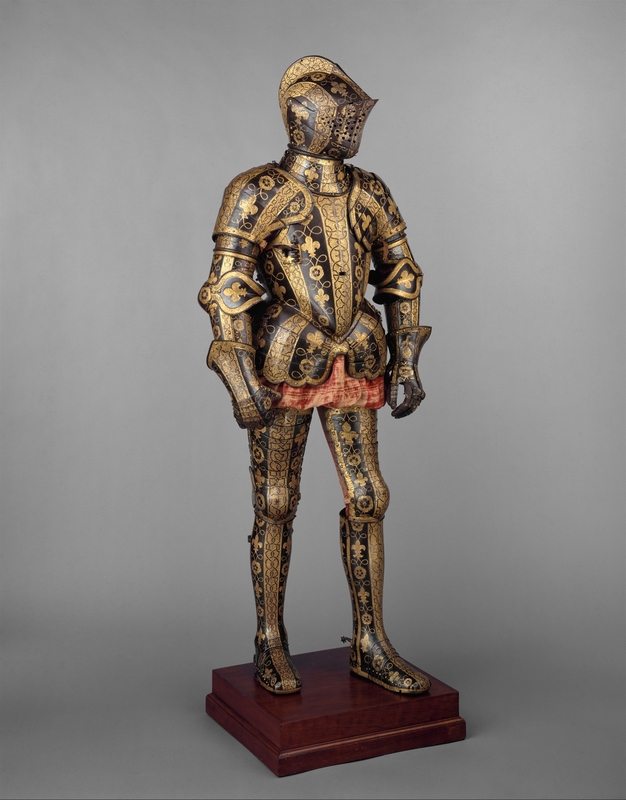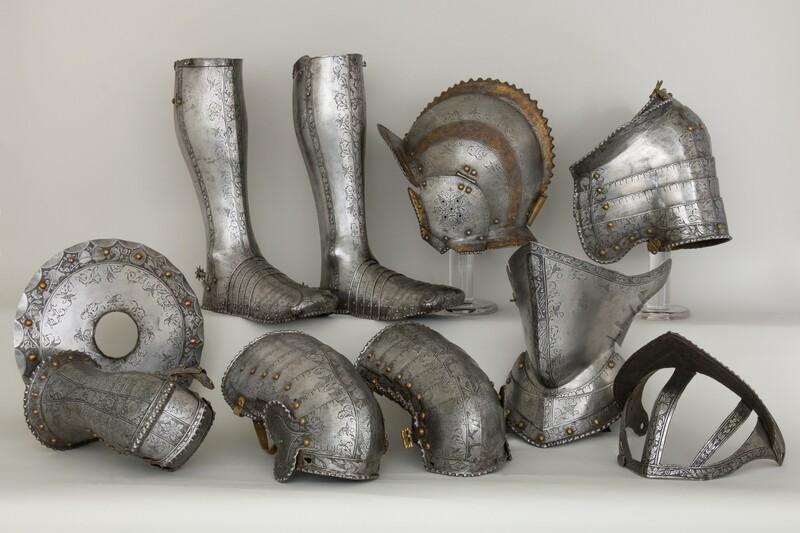Introduction
"Suppose that at the end of the night, made weary by parties and pranks and cross dressing, this whole costumed crew comes home, takes off their disguises, and finds that underneath is not the self they expected to find, but another costume drawing the body. And suppose under this alien identity is another, perhaps stranger one; and under the next, another." -Jeffrey J. Cohen, The Armor of An Alienating Identity
Body armor was worn for over four thousand years for both bodily protection and adornment, causing utilitarian and highly decorative armor to see significant production. The cultures of Renaissance Europe are found as prolific examples of this dual utilization, particularly throughout Renaissance Italy, Germany, and Austria. Born from a long history of the highly prevalent armor and chivalric culture of the European Middle Ages, Renaissance armor was a part of a complex culture of knighthood which placed emphasis on the visual expressions of cultural values.
As western European armor developed at the same time as the evolution of more advanced war weaponry, the well-known image of the knight in a full suit of plate armor became a reality for the first time in the fifteenth and sixteenth centuries. This Renaissance full-body suit of armor, also called a garniture, could be comprised of dozens of individual pieces.
Some of these pieces that make up a garniture included the helmet which could include or exclude a visor, the gorget which encircled the knight's neck and throat, the breastplate and backplate, or a cuirass which protected both the front and back of the body, and the pauldrons which covered the shoulders and armpits, and at times covered some of the chest and back. The arms were further protected by a rerebrace to protect the upper arm, a couter protected the elbow, a vambrace to protect the upper arms, and gauntlets to protect the wrists and hands. The legs were protected by tassets which extended from the hip to the upper thighs, cuisse to protect the thighs, poleyn to protect the knees, and the greave and sabaton to protect the shins and feet. Many of these individual pieces can be seen in the featured German Elements of Armor Garniture photograph, while the armor of George Clifford displays the assembled state of a garniture.
During the Renaissance, this development of full-body suits of custom-fit metal plate armor came to its visual peak at the same time as the establishment of the social phenomenon of tournaments and ceremonies. The new multi-purpose demand of armor for both the dangerous battlefield and harmless community settings catalyzed a world of armor that could be highly ornate and decorative without worry of risk to the armor’s durability. The continued evolution of this newly artistic nature to armor reached its pinnacle in the mid sixteenth century. By this point, armor had transformed through artistic ornamentation into a kind of wearable sculpture, transforming the body for the sake of exploring masculinity and power, connecting the values of knighthood and martyrdom, and escaping the limitations of the body’s physical boundaries.

